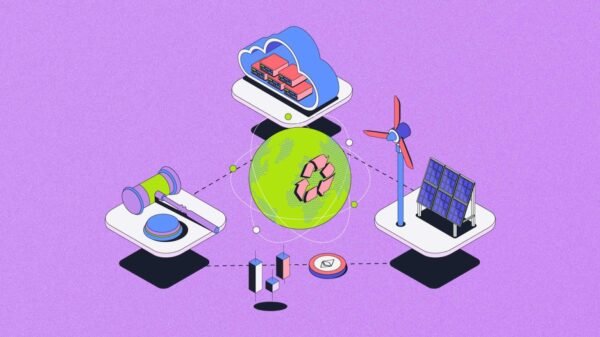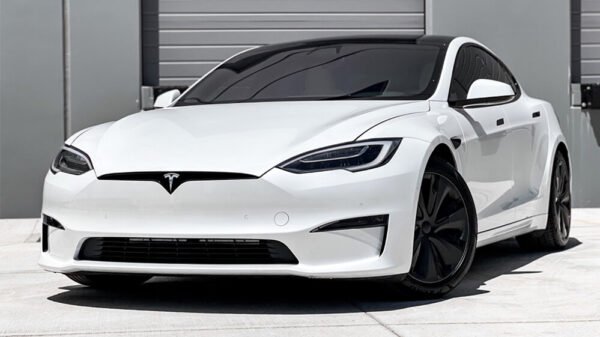Reducing Your Carbon Footprint: Simple and Effective Strategies
1. Sustainable Transportation Choices
Transportation is a significant contributor to carbon emissions, but there are several ways you can make greener choices:
- Opt for Alternative Modes of Transportation: Consider walking, cycling, or using public transportation whenever possible. These modes of transport have minimal or zero carbon emissions and promote a healthier lifestyle.
- Carpool and Share Rides: Carpooling with colleagues, neighbors, or friends reduces the number of vehicles on the road, resulting in lower emissions per person.
- Choose Fuel-Efficient Vehicles: When using a car is unavoidable, opt for fuel-efficient vehicles or hybrid or electric cars. These vehicles consume less fuel and emit fewer greenhouse gases.
- Drive Responsibly: Adopt eco-driving practices, such as avoiding rapid acceleration and braking, maintaining proper tire pressure, and limiting air conditioning usage. These measures can significantly reduce fuel consumption and emissions.
- Support Sustainable Infrastructure: Advocate for developing efficient public transportation systems, cycling lanes, and pedestrian-friendly infrastructure in your community.
2. Energy Efficiency at Home
Reducing energy consumption in your home decreases your carbon footprint and lowers your utility bills. Here’s how you can enhance energy efficiency:
- Conduct a Home Energy Audit: Conduct an energy audit to assess your home’s energy usage. This evaluation will identify areas where energy efficiency improvements can be made, such as insulation, sealing air leaks, and upgrading to energy-efficient appliances.
- Switch to LED Lighting: Replace traditional incandescent bulbs with energy-efficient LED lights. LED bulbs consume less energy, have a longer lifespan, and emit minimal heat.
- Unplug Electronics and Appliances: Many devices continue to consume energy even when they are not in use. Unplug electronics and appliances when unnecessary, or use power strips with an on/off switch to completely cut off standby power.
- Set the thermostat appropriately. Adjust your thermostat to save energy. Lowering the temperature in winter and raising it in summer by a few degrees can significantly impact energy consumption.
- Harness Solar Energy: Consider installing solar panels on your roof to generate clean and renewable energy for your home. Solar power reduces reliance on fossil fuels and lowers carbon emissions.
3. Sustainable Food Choices
The food we consume has a substantial carbon footprint. By making conscious choices, we can minimize the environmental impact of our diet.
- Reduce Meat Consumption: Animal agriculture significantly contributes to greenhouse gas emissions. Opt for plant-based meals or reduce meat consumption by having meatless days throughout the week. Incorporate more fruits, vegetables, grains, and legumes into your diet.
- Choose Local and Organic: Support local farmers and reduce carbon emissions associated with long-distance transportation by purchasing locally grown and organic produce. These choices also promote sustainable farming practices and reduce pesticide usage.
- Minimize Food Waste: Plan meals, store food properly, and repurpose leftovers to minimize food waste. Composting food scraps is an environmentally friendly way to dispose of organic waste and enrich the soil.
- Shop Responsibly: Look for products with minimal packaging and choose eco-friendly brands that prioritize sustainable production and fair trade practices.
4. Sustainable Consumption and Waste Management
Practicing mindful consumption and sustainable waste management practices are crucial in reducing your carbon footprint.
- Prioritize Quality Over Quantity: Avoid impulsive buying and focus on purchasing durable and high-quality products that have a longer lifespan. This approach reduces waste generation and the need for frequent replacements.
- Embrace Secondhand and Circular Economy: Consider buying secondhand items or participating in clothing swaps to extend the lifespan of products. Support businesses that promote circular economy principles by repairing, repurposing, or recycling products.
- Recycle and Compost: Learn about recycling programs in your area and ensure proper separation and disposal of recyclable materials. Composting organic waste at home or utilizing municipal composting facilities reduces the amount of waste sent to landfills and produces nutrient-rich soil.
- Reduce Single-Use Plastics: Minimize single-use plastics such as plastic bags, straws, and water bottles. Opt for reusable alternatives like cloth bags, stainless steel bottles, and bamboo utensils.
5. Education and Advocacy
Education and advocacy are vital in combating climate change and inspiring others to take action.
- Stay Informed: Stay up-to-date with the latest scientific findings, environmental policies, and sustainable practices. Follow reputable sources, read books, attend webinars, and engage in discussions to broaden your knowledge.
- Spread awareness. Share your knowledge and experiences with others. Encourage your friends, family, and community to adopt sustainable habits and make informed choices.
- Support Climate Initiatives: Get involved in local and global climate initiatives and support organizations working towards sustainable solutions. Volunteer, donate, or participate in campaigns that advocate for renewable energy, conservation, and climate action.
Conclusion
Reducing your carbon footprint is a crucial step toward building a sustainable future. By implementing the simple strategies outlined in this guide, you can contribute to the collective effort to mitigate climate change and preserve our planet for future generations. Remember, every small action counts, and together we can make a significant impact. Let’s take responsibility for our carbon emissions and create a greener, cleaner, and more sustainable world.

















































